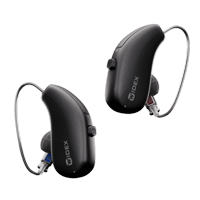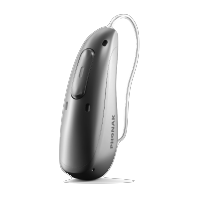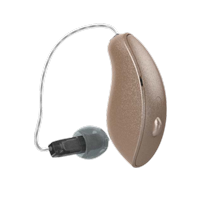When deciding to get hearing aids for the first time, many people list their top concern is how they look, and what people will think of them when they notice the hearing aids.
The stigma attached to having hearing aids can be a big deterrent to getting them at all.
If you could get all of the benefits of hearing aids: better communication, easier hearing, noise cancelling…and the hearing aids themselves were invisible, would that change your perspective?
Well, now this is not just a daydream. Invisible hearing aids have become a reality, and they are helping more people than ever improve their hearing without the self-consciousness and stigma attached to using hearing aids.
Invisible-in-the-canal (IIC) hearing aids are now available and once inserted, are practically invisible to everyone.
The Benefits of IIC Hearing Aids:
They’re invisible. IICs are so tiny that once inserted in the ear canal, they are not noticeable or visible. Because they are so small, they fit deep into the ear canal and most people will not be able to see them. If the stigma of hearing aids has been stopping you from getting them, IICs could be right for you.
They’re comfortable. Because IICs fit so snugly deep within the ear canal, they don’t trap sound and cause an echoing called the occulusion effect like larger hearing aids can. Sounds are more natural, less hollow, less distorted.
They preserve battery life. The power output for IICs is lower than other hearing aids because they sit so close to the ear drum. This proximity to the ear drum also effectively prevents feedback, especially when talking on the phone.
The sound quality is superior. Natural sound quality is another benefit of IICs. It sits so deep in your ear canal that it is can leverage the natural acoustics of your ear to funnel sound, giving it a more natural tone as a result. There are no tubes or wires, so there is nothing to block the sound. An easier adjustment to using hearing aids has been reported, as well as better localization of sound.
IICs do have some drawbacks, however, which should weigh into the decision you make.
The Drawbacks of IIC Hearing Aids:
They only have one microphone. Most hearing aids are larger, so they can support multiple microphones, which allows for advanced directionality (the ability to focus on a sound in a certain direction and reduce background noise in that direction). Because IICs are so tiny, they can only support one microphone and therefore cannot offer the same directionality.
They preserve energy, but can only support very small batteries. The small size of IICs can only support a smaller battery that is depleted more rapidly than the larger batteries of other devices. The battery will therefore require more frequent charging.
IICs cannot accommodate severe hearing loss. People with mild to moderate hearing loss will benefit most from IICs. The small size can only offer limited capabilities.
IICs don’t fit some people’s ears. Occasionally IICs don’t work for people because of the shape of their ears. People with short ear canals or that are small or of an irregular shape may not be able to use IICs.
While IIC hearing devices are a marvel of modern technology and can be the perfect solution for some, especially people with mild to moderate hearing loss who are worried about bulky hearing aids, they are not right for everyone. Consult with your audiologist to weigh the pros and cons before deciding one way or the other.
Here at California Hearing Center we are committed to your hearing health. Call us today to set up an appointment for a hearing screening. We can discuss hearing aid options with you and work with you to find one that fits your budget.









